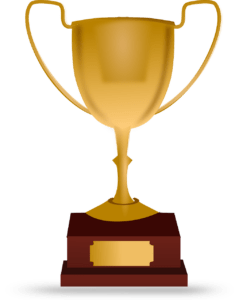We’re happy to announce that the office is currently accepting proposals for this year’s Teaching Innovation Awards. We’re excited to celebrate the high impact work of A&S faculty, especially as it relates to enriching student learning. Further, we fully support faculty work as each award contributes $1,000 to an instructor’s research account.
Past year’s winners have included:
Creating Image Macros with Online Meme Generators to Encourage Critical Engagement with Controversy in Digital Modalities by Katherine Carlson from the Expository Writing Program (EWP)
Project Description
When we talk about Internet memes, we’re usually talking about image macros: images overlaid
with text that are replicated, reimagined, and disseminated almost instantaneously. An endlessly replicated image may not sound like a promising catalyst for critical thinking, but in order for a meme to be funny, it must seize on a core irony or central tension. Bringing them into the classroom directly engages with forms of digital communication with which students are already very familiar, and ask students to think about them as a form of rhetoric.
This exercise is part of a larger unit that asks students to select a contemporary controversy and situate it within a larger cultural context. My students could easily write a persuasive “pro” or “con” essay, but they were having trouble identifying the cultural anxieties from which the debate arose. With only an image and brief captions at their disposal, they were forced to identify the core disagreement, or in the case of some mainstream controversies, a misplaced moral panic, within a larger conversation. With that insight, they were ready to construct a research question.
Check out some student examples here!
Creating Collaborative Biogeography Maps Using ArcGIS StoryMaps by Mustafa Saifuddin from XE: Experimental Humanities and Social Engagement
Project Description
I teach graduate seminars for XE: Experimental Humanities and Social Engagement on topics related to the environmental sciences and environmental humanities. In each of my courses, I pair assigned readings from across disciplines with exercises in which students are asked to closely observe, visualize, collaborate, experiment, or otherwise engage with some component of the environment. Students are encouraged to creatively adapt methods used in the natural sciences — including microbial culturing, microscopy, soil sampling, and other modes of environmental observation — to investigate interdisciplinary questions situated in ecosystems accessible to them. They then submit images of their samples or observations alongside written or audio reflections, which we combine into a collective biogeography using ArcGIS StoryMaps. These exercises and the resulting maps (well-suited for hybrid and virtual courses) allow students to integrate theory with material engagement with the environment, explore connections across their projects, and visualize manifestations of their readings in their surroundings.
Check out the StoryMap here!
Using Innovations in American Sign Language (ASL) to Improve Education in Organic Chemistry for both Hearing and Deaf/Hard-of-Hearing Students by Keith Woerpel from the Chemistry Department
Project Description
This proposal brings together objectives in education with the goal of fostering diversity and inclusion. Learning organic chemistry requires visualizing how molecules react and interact in three dimensions. These skills are challenging and often stress-inducing for students. I believe that the use of sign language will help students engage actively with the material and will help them learn these important skills. It will also show hearing students that they can learn from their deaf/hard-of-hearing peers.
A visual language, American Sign Language (ASL), can improve outcomes in organic chemistry courses. These new signs present concepts in organic chemistry such as the way molecules approach each other in specific orientations. Originally, these signs were introduced to help deaf/hard-of-hearing students perform as well as their hearing peers. Over time, however, the use of these new signs allowed the deaf/hard-of-hearing students to outperform their hearing peers. The authors attributed this improved performance by the deaf/hard-of-hearing students to their ability to use the new signs as visual cues to unify concepts in organic chemistry, allowing them to make connections in a way that hearing students had not.
These new signs should help all students, both hearing and deaf/hard-of-hearing students, learn organic chemistry. They will give students the ability to conceptualize chemical reactions with tools that are literally at their fingertips. I anticipate that this activity will provide an avenue for students to engage themselves actively in their learning and they will experience a more diverse learning environment.
How to Apply
All full-time faculty who are teaching this spring are eligible to submit a proposal. Please note that funding for graduate and undergraduate student workers is excluded. Awardees will receive $1,000 in the form of additional research funds.
Applicants should submit:
1. A one-page narrative proposal. Your proposal statement must include your instructional goal(s) — what problem are you trying to solve? — and how you will measure the success of these efforts.
2. A budget if your submission includes any specialized equipment or instructional materials. Note that the purchase of equipment is not required for this award and that any such purchase should not be standard equipment such as laptops and webcams. Examples of equipment covered by this award are devices or instructional materials to meet specialized learning contexts, such as information visualization tools or game creation applications.
Please email your proposals to asdean@nyu.edu on or before February 23, 2024; proposals will be reviewed upon submission. In consultation with the deans, awardees will be selected on March 8, 2024. Those who receive awards will be invited to participate as presenters in the next virtual Teaching Innovation Conference on April 4, 2024. Questions? Please reach out to Lucy Appert, Arts & Science Director of Educational Technology at lucy.appert@nyu.edu.

